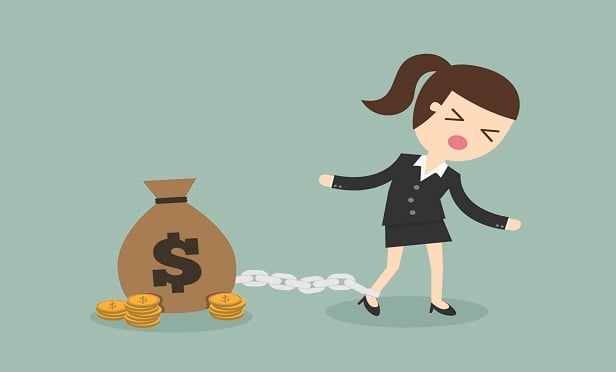World governments have used too much low-interest-rate medicine to get us over the effects of the 2007-2009 Great Recession, according a team of analysts at a research arm of Swiss Re.
Now, governments may have lowered rates about as far as rates can go, the current low rates don’t seem to be helping the economy much, and low rates may be starting to make us sick, the analysts warn in a new world insurance markets outlook report.
(Related: Life Products Look Great in the ‘Emerging Markets’: Swiss Re)
The analysts expect life insurance premium revenue to grow 1% in Europe in 2020, 2.2% in North America, and 3.1% in the world, in spite of the low-rate environment.
But the analysts say that, because of all of that low-rate medicine, life insurers in North America and Europe may soon have to cut or drop the kinds of life insurance and annuity guarantees that help people prepare for retirement.
Bond Basics
A bond is an arrangement that a company or government agency uses to borrow money from investors. Traditionally, life insurers have invested the cash supporting products such as annuities, life insurance, long-term disability insurance and long-term care insurance in bonds from strong companies.
Some “central bankers” — officials at the Federal Reserve Board and other agencies that run countries’ monetary systems — see lowering rates as a quick, easy way to put more money in people’s checking accounts, get consumers buying more stocks and houses, and get companies borrowing and expanding.
Corporate borrowers and investors set corporate borrowing rates themselves, by making their own deals. But, when central bankers lower the official interest rates they do control, stock investors usually cheer and push stock prices up, because they can borrow money to fuel their own investing at a cheaper price, and because of their hope that companies will use cheaper capital to expand.
Some Investors Are Paying Borrowers to Lend the Borrowers Money
Life insurers, pension fund managers and other institutional investors that depend on earnings from bond investments see low rates differently. They use earnings on bonds to generate much of the cash they use to support life insurance, annuities with income guarantees, long-term disability insurance, long-term care insurance, defined-benefit pension benefits, and other long-term obligations.
In Japan, the Swiss Re analysts write, interest rates have been very low for many years.
Ultra-low rates have pushed Japanese insurers away from promoting life insurance and annuity products that help people save for the future. Instead, Japanese life insurers focus more on selling short-term protection products, such as cancer insurance and hospitalization insurance.
In North America and Europe, rates were low in 2018, are getting lower this year, and look as if they’ll stay low in 2020, according to the Swiss Re team.
In the United States, for example, the yield on a 10-year Treasury bond ended 2018 at just 2.7%. The Swiss Re research team is expecting the rate to be about 1.4% at the end of this year, and stay at 1.4% next year.
In the area that uses the Euro, the 10-year government bond yield was just 0.2% at the end of 2018. The yield will probably be negative 0.6% at the end of this year.
A negative 0.6% yield means that insurers with 10-year European government bonds are paying European governments an average of 0.6% interest for the privilege of lending money to those governments. That’s the equivalent of landlords paying the tenants in apartments a small amount of cash to live in the apartments.
Big borrowers can get away with that partly because life insurers, pension fund managers and other institutional investors need part or all their assets to be invested as safely as possible, even if that means an investment arrangement looks more like an investor paying the borrower for an expensive safe deposit box than a moneymaking investment arrangement.
Overall, including both government and corporate bonds, “more than 25% of global bonds currently trade with negative yields,” the Swiss Re analysts write.
“Globally, low and even negative interest rates are set to stay,” the analysts write.
Alternatives
The Swiss Re analysts would like to see the world’s governments reduce their reliance on low interest rates by doing other things to try to get people to buy stocks and houses.
The analysts say alternatives to trying to fuel the economy with low interest rates could include increasing government spending on infrastructure; easing regulatory hassles that hurt businesses’ ability to operate; and keeping more people earning wages, by increasing the normal retirement age.
More Reasons to Stay Away From Low, Low Rates
The Swiss Re analysts also talk about ways they believe very low interest rates hurt the economy in general, not just life insurers.
For a look at seven of those reasons, see the idea cards in the slideshow above. (Wiggle your pointer over the first slide to get the control arrows to show up.)
Resources
A link to Swiss Re’s 2020/21 insurance outlook report is available here.
— Read North America’s Share of Global Premiums to Decline on ThinkAdvisor.
— Connect with ThinkAdvisor Life/Health on Facebook and Twitter.







 November 20, 2019 at 02:58 PM
November 20, 2019 at 02:58 PM




















 Slideshow
Slideshow





